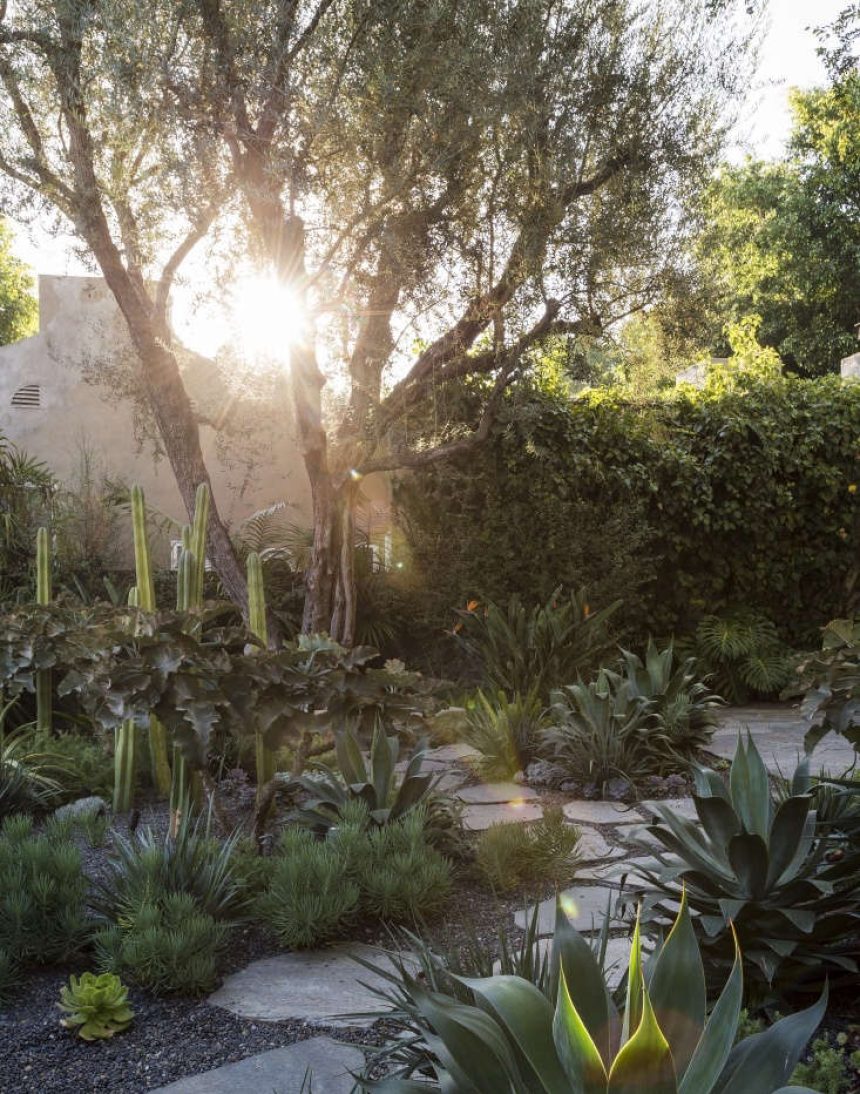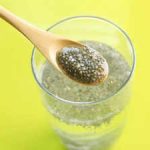These trees have a hidden super power, as Blank explains: “Oaks are considered ember catcher plants. They have thick, well-hydrated, tough leaves and they don’t ignite easily.” On top of that, those leaves aren’t easily blown off the tree by the sorts of high winds that made L.A.’s recent fires so severe.
Creating a grove of oaks at the perimeter of a property can provide a windbreak that also helps block embers from reaching the exterior of a house. (In the case of the L.A. fires, January’s strong Santa Ana winds, which gusted up to 80 miles an hour, were responsible for blowing embers up to a mile.) The Western sycamore and the hollyleaf cherry (Prunus ilicifolia) have also adapted to survive fires, with the ability to grow new shoots after being significantly burned.
By contrast, a rogue’s gallery of other trees are just tinder-boxes waiting to happen. Palms are particularly prone to becoming a ball of fire, due to the trees’ fibrous tissue as well as the fact that homeowners are not always vigilant about removing dried-out dead fronds. In fire-prone Malibu, the city has prohibited palms as well as eucalyptus trees, pines, cypresses and cedars from being planted within 50 feet of any structures. “Eucalyptus are an invasive species and they’ve got so much [resinous] sap that they actually create more fire,” warns L.A.-based architect Lara Hoad.
Prioritize climate-appropriate plants.
Native plants, no matter where you live, are generally a fire-wise choice—but not necessarily because they’ve adapted to fires. Choosing native plants means that your garden will be filled with vegetation that can mostly live on your area’s typical yearly rainfall. These natives are then more likely to stay hydrated and not need (that much) supplemental watering compared to some introduced ornamentals. Natives, notes Blank, “are used to your rainfall conditions. A little supplemental water to keep them hydrated doesn’t mean you have to water two times a week. It means you give them some water during the summer once every two weeks or so—a good soak. And then they should hold onto that moisture and make themselves less susceptible to fire conditions.” Blank is a fan of such native shrubs as toyon, lemonade berry (Rhus integrifolia), Sugar bush (Rhus ovata) and various California species of Prunus because not only can they stay hydrated in California’s climate but they also provide precious habitat for local species.
For guidance on what to plant in your area, check to see if your local county or fire department offers a guide. In Los Angeles, the L.A. County Fire Department has published an extensive list of plants that are recommended and those that are no-nos. Among those “undesirable” plants are trailing junipers (which officials in Boulder County, Colorado, have called “gasoline plants”) and Pampas grass. Surprisingly, some natives are on the L.A. County list—like California buckwheat and native sages—because they can easily build up a jumble of dead branches if not regularly maintained.
“It doesn’t take a lot of imagination to figure out that the hydration level of a plant helps it be more resilient to direct flames,” says Blank, who also underlines the critical importance of clearing out any dead wood or brush. “The mantra is lean, clean and green.” Adds Kameon, “What we’re talking about is that you don’t let your gardens dry out to the point that they become fuel, even if you are creating low-water gardens like we do in Southern California.” She also extensively uses plants from other Mediterranean climates in her landscape designs, flora from South Africa, Australia and Chile that’s similarly adapted to dry summers. “Climate-appropriate plants are the focus of the plants that we work with,” says Kameon.
According to L.A. County’s list, some plants that display high-fire resistance include agapanthus, mondo grass, Bear’s breeches (Acanthus mollis), liriope, coastal strawberry (Fragaria chiloensis), snow-in-summer (Cerastium tomentosum), clivia, and loads of succulents. “Succulents are great and there are thousands of them and they’re gorgeous every scale and size,” says Kameon, who shares that some of her favorites are kalanchoes. “That’s like a whole world that I could play in forever, from the big leafy bronze-colored Kalanchoe beharensis to the little tiny fuzzy tomentosa.” she says. Other faves include sedums (as groundcovers), aloes (“The hummingbirds love the flowers,” says Kameon) and mangaves, the result of hybridizing agaves. “Mangaves are not pointy, so I like to use them in gardens where children are. There’s one I love called Lavender Lady and it is lavender. It’s just beautiful. You know, there’s just a whole world of plants out there.”
To learn more about landscaping in fire-prone areas, Blank recommends checking out Adrienne Edwards and Rachel Schleiger’s 2023 book Firescaping Your Home: A Manual for Readiness in Wildfire Country.
See also:
(Visited 524 times, 524 visits today)







